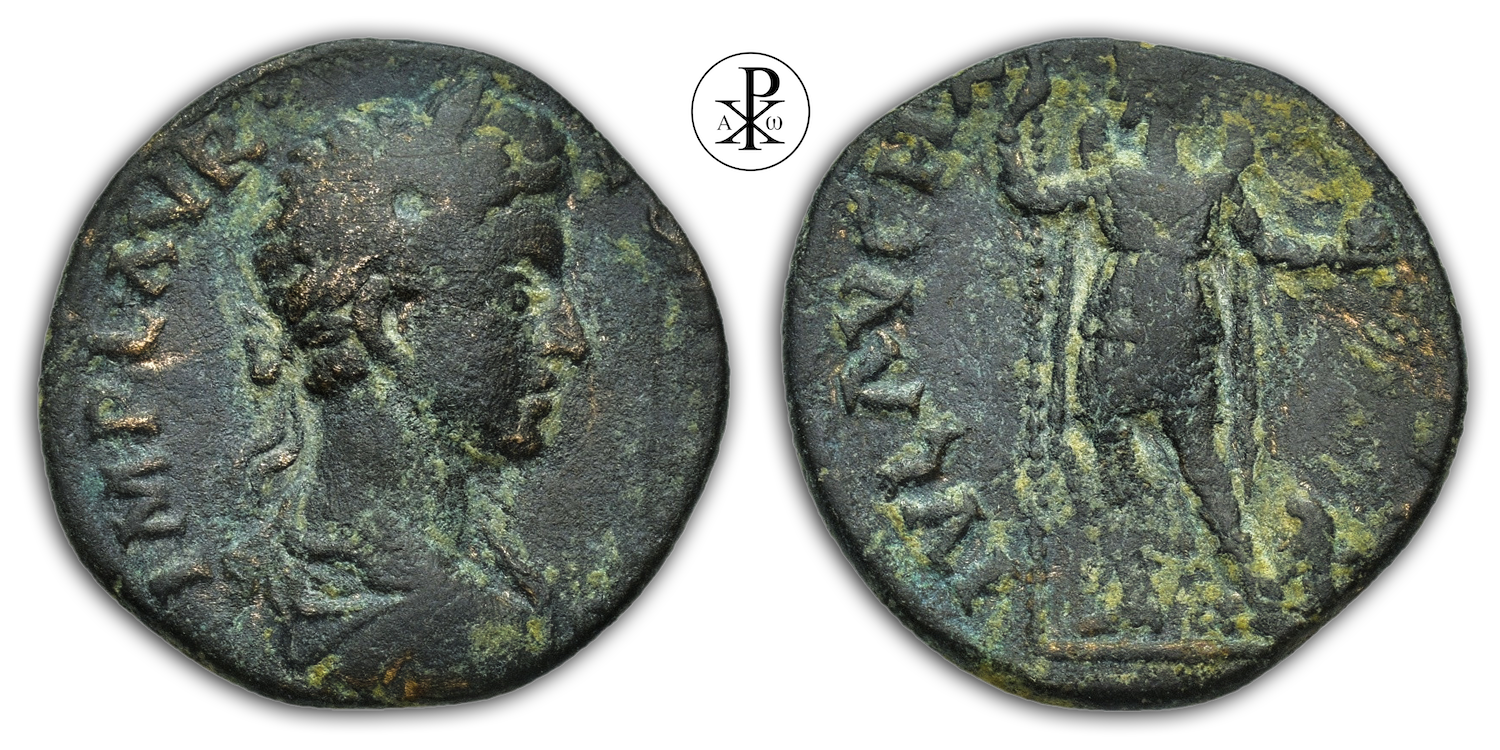Imperator Caesar Lucius Aelius Aurelius Commodus Augustus
Reign: Marcus Aurelius
Mint: Parlais, Pisidia
Date: 177/180 AD
Nominal: Bronze
Material: AE
Diameter: 22mm
Weight: 5.87g
Reference: RPC IV.3 7698
RPC Online: https://rpc.ashmus.ox.ac.uk/coins/4/7698
Rare: Specimens 7 (4 in the core collections)
Provenance: N&N Numismatics London, Great Britain (Auction 14, Lot 170)
Pedigree: –
Obverse: Laureate bust of Commodus (youthful) wearing cuirass and paludamentum, right
Inscription: IMP C (or L) AVR [COMMOΔVS]
Translation: Imperator Caesar (or Lucius) Aurelius Commodus
Reverse: Mên standing, facing, head, right, wearing Phrygian cap, holding long sceptre and pine cone; behind his shoulders, crescent; to right, seated animal (lion?)
Inscription: IVL AVG HA COL PARLA
Translation: Iulia Augusta Hadriana Colonia Parlais
Comment: Parlais, also Paralais, was an ancient and Byzantine city in the Asia Minor region of Lycaonia (later included in Pisidia). Its location is not clearly localised. The city minted its own coins in late Hellenistic times (1st century BC) and then again in the 2nd and 3rd centuries, when it was a Roman colonia under the name of Iulia Augusta Parlais (partly also Iulia Augusta Hadriana Parlais).
Men (Ancient Greek Mên, Latin Mensis) was an ancient lunar deity worshipped in Asia Minor, especially during the Roman Imperial period. The deity is possibly of Persian origin, as suggested by some elements common to the ancient Persian and Men religions. Earliest secure mentions date from the 4th/3rd century BC, but the majority of all evidence comes from the Roman imperial period. The deity was worshipped particularly in Asia Minor, especially in Lydia and Phrygia. Iconographically, she is distinguished by the crescent moon and the Phrygian cap. She wears sleeves and trousers, chiton and cloak. She appears both standing and riding, on horse, ram or cock, occasionally flanked by lions. Mên is attested in various localised variants, such as Mên Askaenos in Pisidia or Mên Pharnakou in Pontus. Taşlıalan (1988), in a study of Antioch in Pisidia, has noted that the people who settled on the Acropolis in the Greek colonial period carried the Mên Askaenos cult to the plain as „Patrios Theos“ and at the site where the Augusteum was built, some gives traces of this former cult as bucrania on the rock walls.
Autochthonous Mên as attested in Anatolia is to be distinguished from his reception as a „Phrygian god“ in Rome during the imperial period. Here, Mên is depicted with a Phrygian cap (like on this coin ) and a belted tunic. He may be accompanied by bulls and lions in religious artwork. The Roman iconography of Mên partly recalls that of Mithras, who also wears a Phrygian cap and is commonly depicted with a bull and symbols of the Sun and Moon. The Augustan History has the Roman emperor Caracalla venerate Lunus at Carrhae; this, i.e. a masculine variant of the feminine Latin noun luna „Moon“, has been taken as a Latinized name for Mên. The same source records the local opinion that anyone who believes the deity of the Moon to be feminine shall always be subject to women, whereas a man who believes that he is masculine will dominate his wife. David Magie suggests that Caracalla had actually visited the temple of Sin, the Mesopotamian Moon god.
